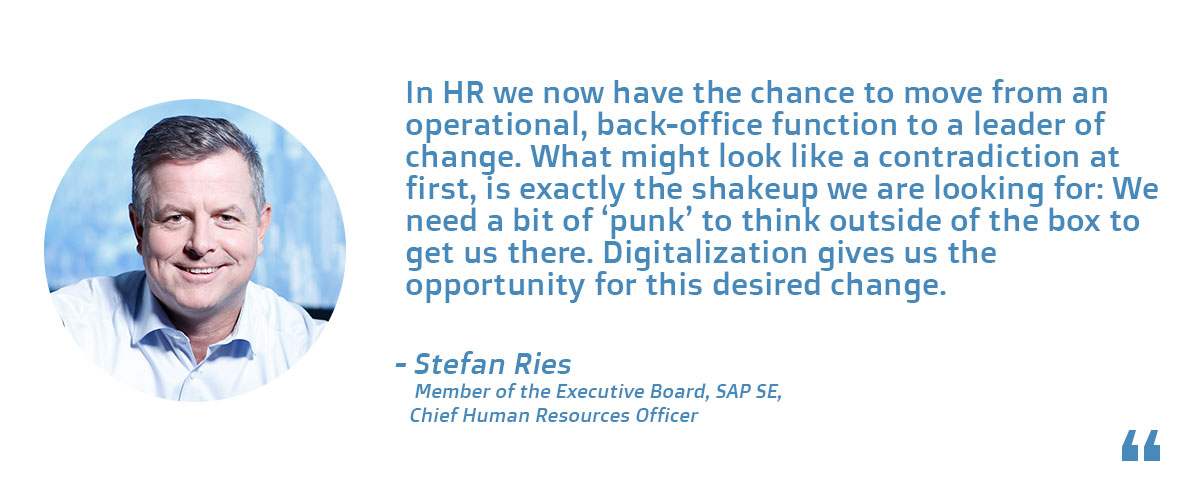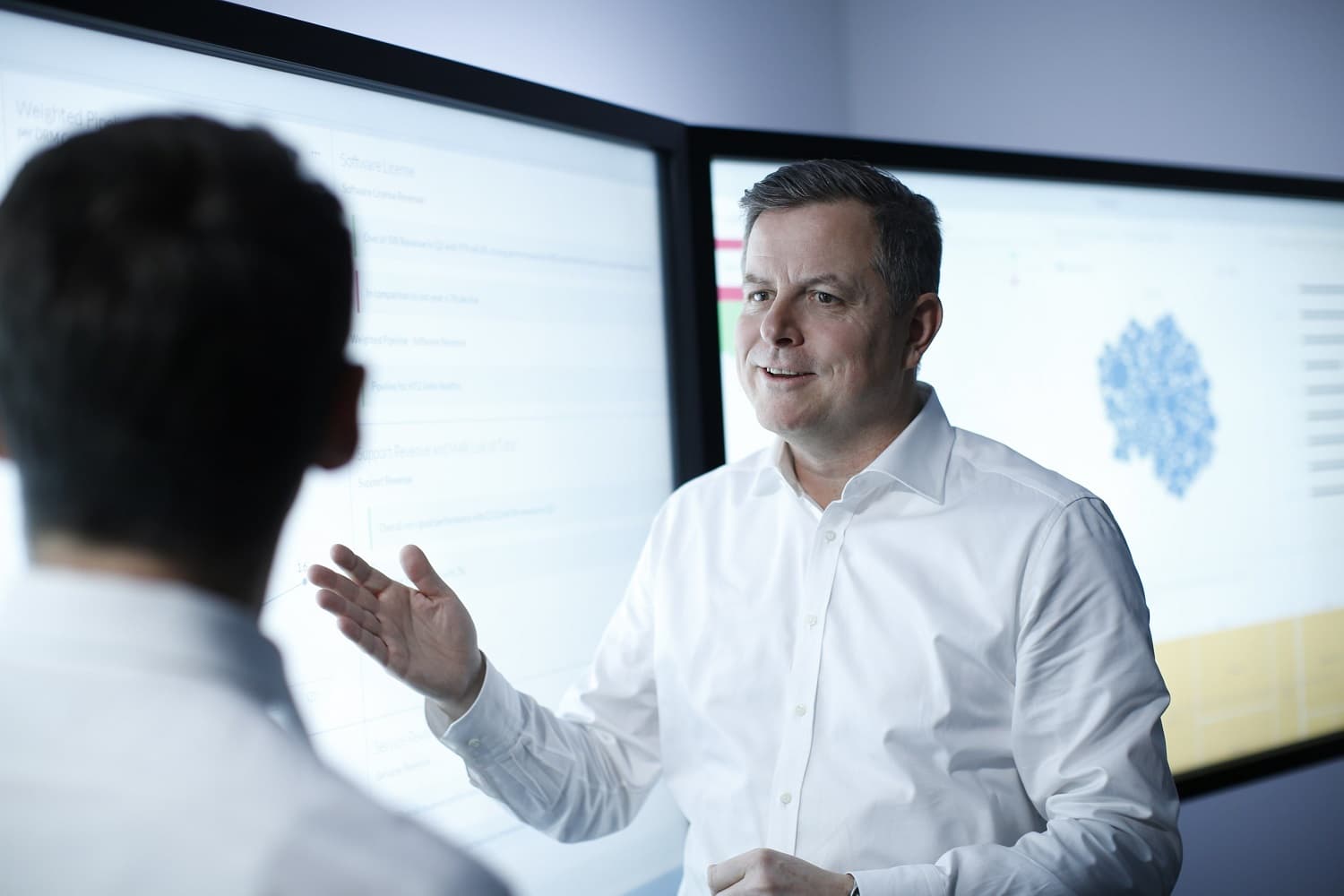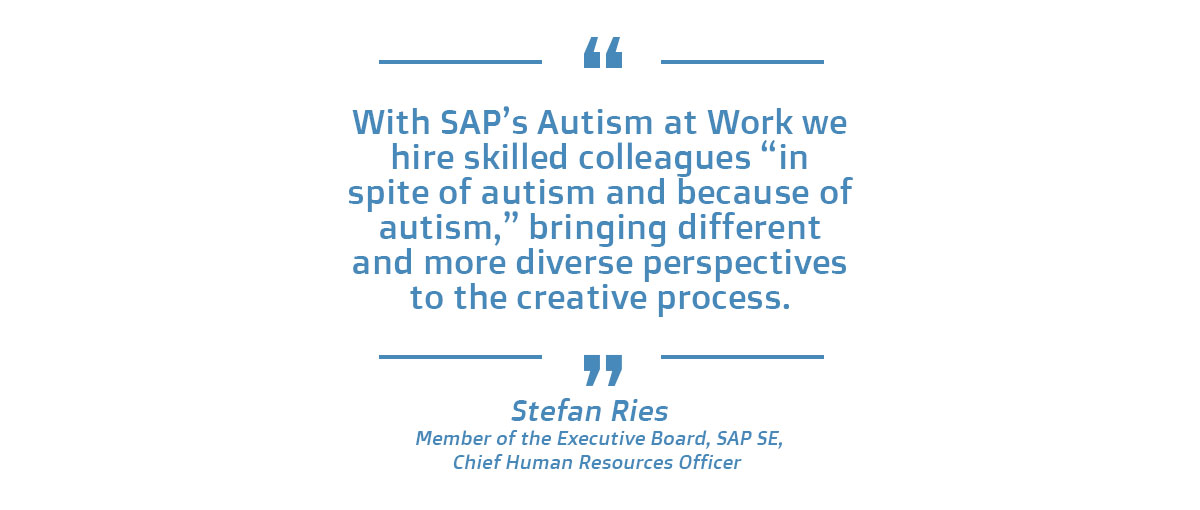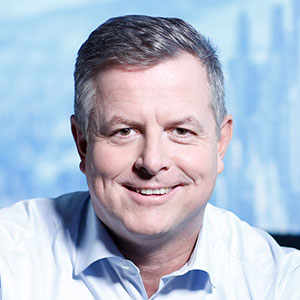“Workforce Skills Upgrade: A New Competitive Advantage”
SAP is one of the few companies leading diversity & Inclusion, having implemented a comprehensive workforce skills upgrade since 2017. It is the world’s first company to incorporate neurodiverse talents into its workforce. And being responsible for providing algorithmic solutions related to workforce and other corporate challenges, it recognizes “HR PUNKS” as a crucial campaign businesses need to remain valuable. SAP SE Executive Board Member and Chief Human Resources Officer, Stefan Ries explains how he is utilizing AI and Big Data to advance HR analytics as the foundations for a successful global future.

The HR Digest: Under your leadership, SAP successfully implemented a comprehensive workforce skills upgrade in 2017. How did you approach this unique task?
Stefan Ries: In 2017, SAP started a transformation of our Services & Support Business as we had learned that the demand for service and support for our customers has been changing. We needed to shift faster to public cloud and new technologies such as IoT, machine learning, SAP Cloud Platform and advanced analytics. We renewed the portfolio and we launched a huge skill transformation. While we were restructuring our services business, we made significant investments in training to help our employees make this skills transition and to introduce a learning culture, as learning is a lifelong journey. Besides growing the skills of the current workforce, we also focused on attracting the best talents with new skills from the market and at the same time retain our best talents in the organization. Our technology has helped us tremendously in analyzing the skills of our workforce, provide learning offerings to employees globally, and get access to talent pools worldwide.
The HR Digest: SAP is one of the few companies that recognize the importance of neurodiverse talent. If you had to make the case for the value of neurodiversity in the workplace, how would you frame it?
Stefan Ries: Many individuals with autism spectrum disorders are well-educated and have valuable skills to contribute in the workplace. 85% of people diagnosed with autism are unemployed. Many people who are employed are under-employed or partially employed, according to the National Autistic Society UK. Combined, this represents a significant untapped talent pool.
Autism at Work is designed to remove barriers that many individuals with autism face when entering the corporate world. With SAP’s Autism at Work, we hire skilled colleagues “in spite of autism and because of autism,” bringing different and more diverse perspectives to the creative process. The approach promotes an inclusive work environment that considers the specific needs and skills of each employee – since employee diversity helps us get a better understanding of our customers, develop innovative solutions, and stay competitive in a global economy. Within SAP, the roles occupied by people with autism span human resources, marketing, finance, software development, and customer support, and range from task-oriented jobs supporting business operations to more complex jobs in creative areas like software development.
The program taps into an underutilized talent source, reducing barriers of entry so qualified individuals can fully develop their potential.

The HR Digest: How are you going to shake things up next?
Stefan Ries: The old days of HR are over. We need to revolutionize. Let’s innovate, disrupt, and challenge the status quo. At SAP, we call this shake-up “HR PUNKS”. It started as a small and crazy idea and is now a movement and campaign across the entire HR organization. What do we mean by HR PUNKS? In HR we now have the chance to move from an operational, back-office function to a leader of change. What might look like a contradiction at first is exactly the shakeup we are looking for: we need a bit of ‘punk’ to think outside of the box to get us there. Digitalization gives us the opportunity for this desired change. With the help of technology, we can create and deliver positive end-consumer experiences. How? By bringing employees with technology at work where they already are in their private lives: mobile, intuitive solutions, easy and fun to use. At SAP, we develop, sell and run people software solutions that help us do so.

The HR Digest: What challenges and obstacles do you see Human Resources Management facing in the future?
Stefan Ries: While there are many challenges and opportunities, I want to highlight three in particular: the future of work is already here. This means we see the impact of digitalization everywhere which has implications on the job market. Companies across all industries call for IT experts – not only IT companies like SAP. This creates what I call a ‘jungle of talent’ out there. 20 years ago, companies could choose which talent they want to hire. As of now, everyone is looking for the best IT talent, and it’s much more the talents who can choose where they want to work. This requires a different approach for HR teams to attract and keep employees.
Secondly, new technologies such as artificial intelligence and big data can be a challenge and opportunity at the same time. While we might see some jobs disappear, new jobs will become available. Huge amount of data combined with predictive analytics will provide the insights necessary for business decisions. That’s especially relevant for HR, as fact-based decision making versus gut feeling will be one outcome.
Last but not least, I can only repeat what I’ve already said many times: let’s look at the opportunities. And there’s many. Digitalization brings us the opportunity to improve people’s lives around the world.

The HR Digest: What do you consider your most rewarding experience in professional life?
Stefan Ries: For me, it’s the constant opportunity to learn and enrich our personal experiences regardless of our age and working experience. Let me give you an example from my own professional life. While I have the chance to visit customers and SAP locations around the world, it’s a clear mandate to reflect on cultural differences and implement them in HR core processes. Listening to those who use our software is how we ensure we focus on our customers – rather than just throwing good ideas from our headquarters into the world.
This article was published in the April 2019 issue of The HR Digest magazine.
Stefan Ries | Member of the Executive Board, SAP SE, Chief Human Resources Officer

Stefan Ries, Chief Human Resources Officer (CHRO) and Labor Relations Director, is a member of the Executive Board of SAP SE with global responsibility for Human Resources. He was appointed to the Executive Board of SAP SE in April 2016.
PHOTOS: SAP
Subscribe to the leading Human Resources Magazine to receive exclusive HR news and insights directly to your inbox.





